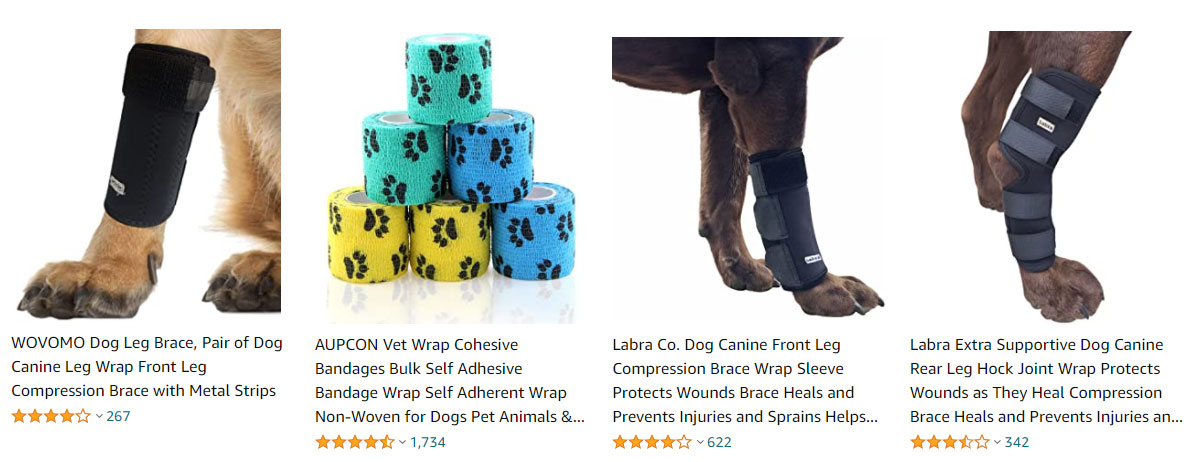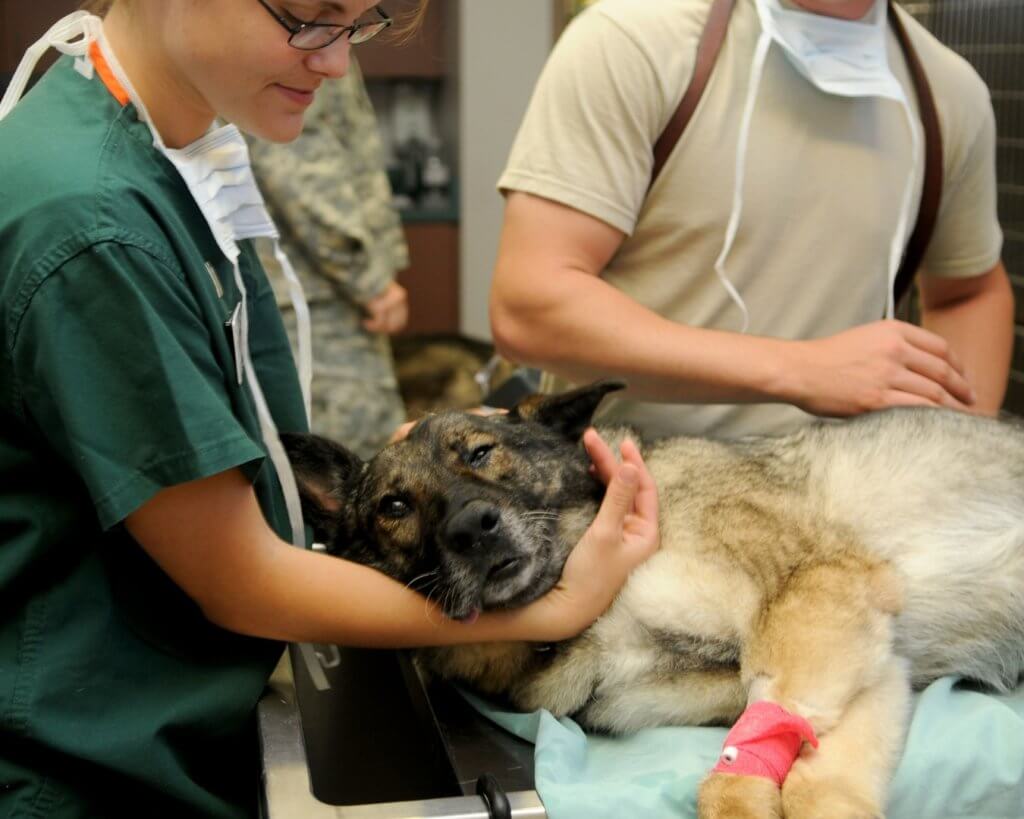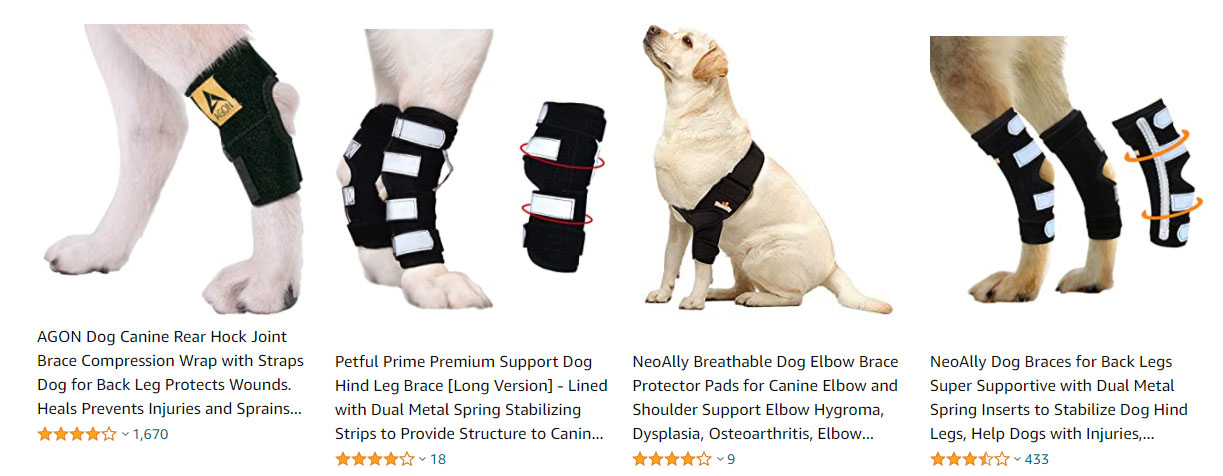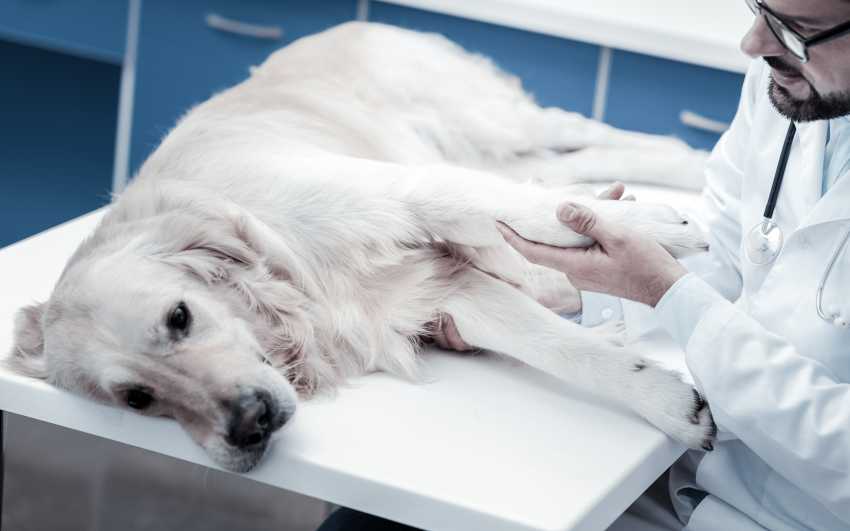Sprain in dogs
Is your dog happily galloping around you, then suddenly stops with a whiny squeak? He may be suffering from a sprain, a common condition that affects humans more often than dogs.
The sharp pain of a sprain can quickly be replaced by a dull ache, which your pet will manifest in a less explicit way. It is therefore important to learn how to detect a sprain in dogs so as not to miss a potentially serious injury, which can leave lifelong sequels and harm your pet's health.
What is a sprain in dogs?
A sprain is the elongation or rupture of a ligament, a tissue that connects different bones of the animal between them. It is important to distinguish the different degrees of severity of a sprain, because a mild sprain does not have the same consequences on your dog's long-term health as a severe sprain.
It is also necessary to distinguish between sprains and tendonitis, as tendonitis is an inflammation or lesion of the tendons, the tissues that connect the muscles to the bones. Tendonitis often occurs in sporting dogs, during a physical effort that is too intense or badly prepared.
Sprains, on the other hand, put the animal's joint at risk and usually occur during a normal activity (walking, playing, etc.). Mild sprains, or 1st degree, do not involve tears of the ligaments, and consist of a simple stretch that is not very severe.
Second-degree sprains involve a more severe strain, sometimes with a partial tear of the ligament. The severe sprain, or 3rd degree, presents a complete rupture of the ligament that can be accompanied by a bone tear at the joint.
Contrary to what one might think, severe sprains are more damaging than fractures - in dogs as in humans - because the ligaments never regain their initial flexibility and strength after healing.
What causes sprains in dogs?
The causes of sprains are usually traumatic. They occur, for example, when a dog walks into a hole that it did not see or landed badly when jumping off an embankment. Some forms of sprains are degenerative, meaning that they occur as the joint ages, usually gradually.
Finally, other forms of sprains may be related to genetic abnormalities involving abnormal development of the ligaments. In fact, some breeds, such as the Border Collie, are prone to developing specific forms of sprains, such as carpal hypertension.

What are the symptoms of a sprain in dogs?
The symptoms of a sprain are not very typical, especially since there are many reasons why your pet may be limping, and this abnormality of mobility is an almost systematic symptom of a sprain. If you have seen your pet fall or stumble and then go limp, it is most likely a sprain.
If you didn't see the accident, but you notice that your dog has an abnormal gait, you may also suspect ligament damage. In the case of a sprain, the dog will usually avoid leaning on the injured limb, which results in a more or less intense limp or even a three-legged gait.
The injured limb may also start to swell, more or less spectacularly depending on the severity of the sprain. Swelling can occur quickly, but usually occurs several hours after the accident.
Hematomas, which are difficult to see through the dog's coat and whose intensity varies according to the severity of the injury, are also symptomatic of a sprain. Finally, if the pain is severe, your dog may choose to remain prostrate: if you notice that your pet no longer leaves his basket when you come home in the evening and seems down or "sad", consider inspecting his paws.
It is quite possible that he has twisted a limb while you were away and does not dare to come to you or to celebrate, for fear of moving his painful paw.
What are the consequences of a sprain for a dog?
The consequences of a sprain in a dog vary, but unfortunately this type of injury almost always leaves your pet with after-effects. Sprains, especially severe ones, cause deterioration of the affected ligament which never completely heals.
Fortunately, this type of after-effects is generally not too disabling in the dog's life, but the dog may nevertheless remain fragile in the limb concerned. This will result in an increased risk of recurrence, because a relaxed ligament does not hold the joint as well as it did initially.
The after-effects of sprains are more difficult to live with for sporting dogs, adventurers and "professional" dogs (rescue dogs, police dogs, etc.) who are sometimes forced to stop their activities to avoid relapses. A dog that has suffered a severe sprain will sometimes have to give up an intense rhythm of life, but will be able to continue to live a normal life and go for long walks with its owner.
However, rough terrain and activities involving jumps (such as the Agility course) should be avoided. The rupture of the cruciate ligaments, which affects the animal's knee, is generally the most serious sprain, and a complete recovery is rarely possible in this case.
That said, there is no need to be demoralized if your doggy has just made a beautiful sprain while he was promised to a future of Agility champion!
The after-effects can be reduced with a good rehabilitation, and all sprains evolve on a case by case basis. Your dog can recover very well from his injury, despite ligaments a little more fragile than before, and continue his activities as if nothing had happened... Each sprain is unique!
Finally, it is also possible that a sprain is accompanied by a fracture, a dislocation or other more serious internal or external injuries. Only a veterinarian will be able to examine your pet to determine the extent of the injury, the severity of the injury and its potential consequences on your dog's daily life.

What to do if my dog has a sprain?
1. Immobilize your dog
If your dog seems to have a sprain, don't force him to walk. Instead, try to keep him still. Immobilizing the injured leg is the best solution for pain, and it will also prevent the injury from getting worse, especially if there is a fracture or ligament rupture.
2. Check your dog
Before you panic, it's important to determine if you're dealing with a sprain or if your dog is suffering from some other condition. Take the time to gently inspect his paw to make sure there are no other visible injuries: your dog may have simply stepped on a sharp object or placed his paw on a hot surface.
Examine his paw pads carefully: if you don't see any wounds, work your way up the paw that seems to be in pain by carefully palpating it. If you detect a swollen, red, blue or warm area, it's a sign of inflammation and there's a good chance you've hit the wound that's causing your dog pain.
Continue your inspection, however, as your four-legged friend may have multiple injuries. Go up to his shoulder, and also feel his ribs and spine to make sure his limp isn't caused by another problem.
3. Apply cold
When you are sure you have located the sprain, place ice cubes wrapped in a towel on the swollen area of your dog's leg. Never place ice directly on the skin of your dog, as this can cause a severe cold burn!
4. Recheck the wound
Wait a few minutes, then re-inspect your doggie's wound to make sure that the swelling is reasonable and that there are no skin sores or irregularities under the skin that would suggest a fracture. If the swelling is minimal and the dog doesn't seem to be in too much pain, let the ice work, then apply an anti-inflammatory ointment specifically for dogs to the wound.
5. Make a bandage
To help your dog keep his injured limb still, you may want to start making a makeshift Robert Jones bandage. This pressure bandage starts at the hock (back leg) or elbow (front leg) of the animal, and works its way down to the bottom of the limb to prevent it from bending its knee joint.
It helps contain the injury to prevent the animal from making it worse by moving the injured leg involuntarily, and also offers a good solution to reduce pain. To make a Rober Jones bandage, also known as a "Jones" bandage, you will need a cotton roll, which you will use to wrap around the injured paw, starting from the toes and working up to the elbow or hock.
Any other material is not suitable, as the bandage must fit the shape of the dog's leg and be soft enough not to constrict the limb and create a tourniquet effect. Lay the cotton loosely around the dog's leg until it reaches a thickness of 4 cm for a small dog and 8 cm for a large dog. Once this is done, wrap a strip of crepe around the cotton, packing it sufficiently so that it perfectly immobilizes the dog's paw by compressing it moderately, without tightening it too much so as not to block the vascularization.
6.Take your dog to the vet
If the sprain seems severe, if your dog seems to be in a lot of pain, if he can't lean on his leg at all, if the leg is very swollen or if the swelling doesn't go down after 24 to 48 hours, take your dog to a veterinarian without delay.
FAQ
How do I know if my dog has a sprain?
Generally, a dog with a sprain has an abnormal gait: to put it simply, he limps. He tries to lean as little as possible on his injured leg to avoid pain and, as a general rule, the more marked the limping, the more severe the sprain.
How did my dog get a sprain?
A sprain usually occurs as a result of trauma: your dog may have twisted a paw while trying to make a sharp turn during a mad dash or missing a step. In some cases, sprains can be caused by genetic diseases or degenerative disorders.
My dog has a sprain, what should I do?
If the sprain is traumatic, keep your dog strictly immobile, let him rest and carefully monitor the evolution of the injury and his general condition. If the wound does not swell after 24 to 48 hours, if the dog's condition deteriorates (prostration, increasingly marked limping, anorexia) or if the sprain does not seem to be due to a trauma, consult a veterinarian quickly.
Are some dogs prone to sprains?
Traumatic sprains affect all dogs, whether they are athletic or not, large or small, young or old. Degenerative sprains are more common in older dogs, and sprains due to genetic abnormalities affect specific breeds, such as some Collies.
Can a dog sprain heal?
Dog sprains do heal, but unfortunately a damaged ligament will never regain its original flexibility and strength. In the most severe cases, your dog may therefore remain fragile in the affected limb and, if he is not careful, may sprain the same joint again regularly.
Sprains in dogs are not to be taken lightly, especially since they can have more lasting consequences than a fracture in the long term. If your dog is a daredevil and does not hesitate to play the fool on uneven ground, the best thing to do is to offer him a good health insurance to be able to be treated in case of accident...
Unfortunately, a sprain can happen very quickly, and the veterinary care that may be necessary in case of severe injury can be very expensive.


